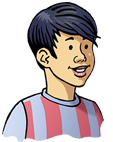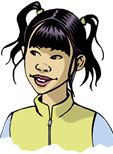The question is asking you to explain the main idea of the text.
Let's practise
Most of the world's roller coasters are gravity-powered, which means that once a motor has dragged the cars up to the top of the first big hill, it's only the force of gravity that takes you all the way to the end of the ride.
The force that pushes you down into your seat on a roller coaster is called the centripetal force. The need to have enough centripetal force is why a roller coaster's loops aren't circular. Instead, they're what's known as clothoid loops, which look like a circle that someone's squeezed from the sides. As you climb up the loop, you lose speed. In order to keep enough centripetal force to hold you in your seat, you have to tighten up the radius of the loop.
From an article about roller coasters from First News, Issue 431 (First News, 19-25 September)

What is the most important thing this text tells you about roller coasters?
1 mark

- Read the question and read it again. What is it asking?
- Are any terms repeated throughout the text?
Yes, the force of gravity and centripetal force.
- How does gravity help during the ride?
It keeps the cars going to the end of the ride.
- How does centripetal force help during the ride?
It keeps you in your seat.
- Put the information together and answer the question.
Roller coasters use two forces, gravity to keep the ride going and centripetal force to keep you safely in your seat.
- Check your answer.


